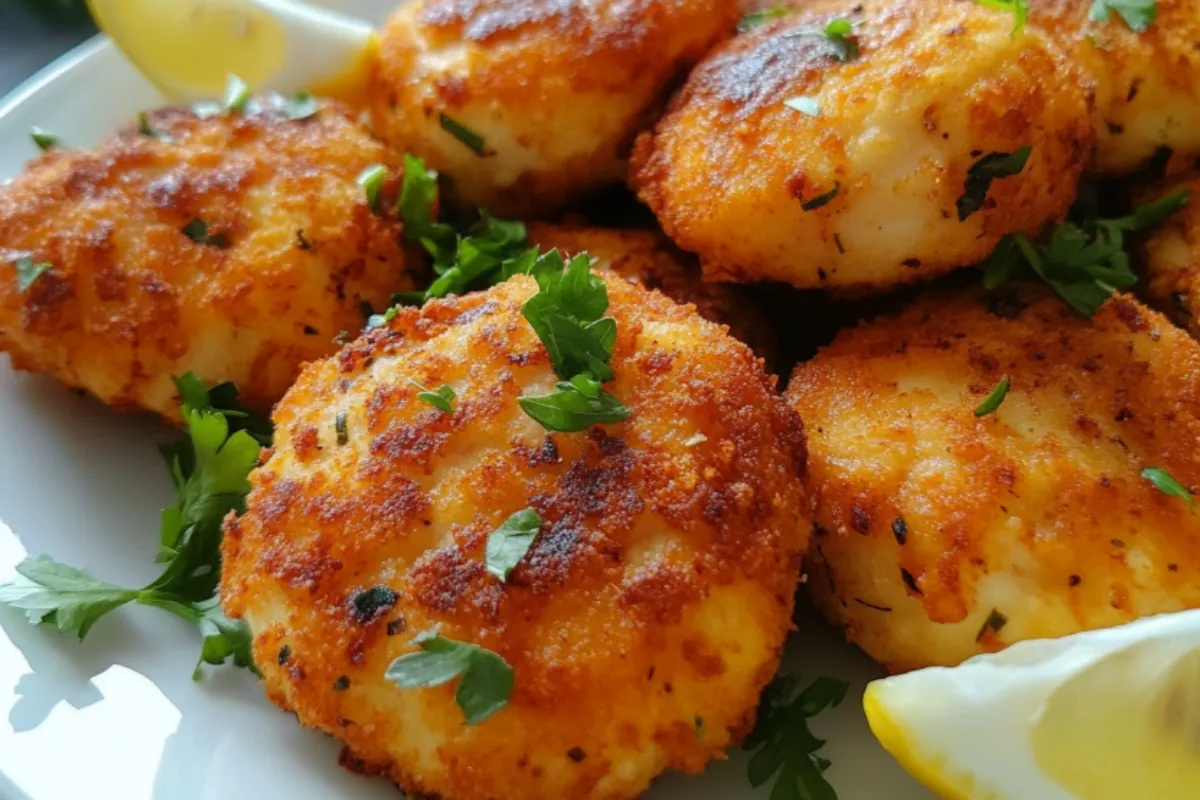What is a Cutlet of Chicken?
A chicken cutlet is a thin, boneless piece of chicken that’s typically breaded and fried to crispy perfection. The beauty of a chicken cutlet lies in its simplicity—it’s essentially a portion of chicken breast (though it can be other cuts as well) that’s been pounded thin, seasoned, coated in breadcrumbs, and then pan-fried or deep-fried. This preparation method gives the chicken a satisfying crispiness on the outside while keeping the meat juicy and tender on the inside.
Whether you’ve had it as part of a classic chicken Parmesan, served alongside a light salad, or stuffed in a sandwich, chicken cutlets are incredibly versatile and easy to prepare. They’re loved for their crisp texture and savory flavor, making them a staple in many kitchens.
Definition and Characteristics of a Chicken Cutlet
So, what sets a chicken cutlet apart from other chicken dishes? Well, it’s all about the preparation and the technique used. Chicken cutlets are typically made from boneless, skinless chicken breasts or sometimes chicken thighs that have been pounded thin using a mallet or rolling pin. This tenderizes the chicken and allows for a quicker cooking time.
Once the chicken is thinly sliced, it’s seasoned and coated with breadcrumbs, flour, or a combination of both, and then fried. The outer coating provides a crispy texture, while the inside stays tender and juicy. The end result is a delicious piece of chicken that’s crispy on the outside, but moist and flavorful on the inside.
Differences Between Chicken Cutlets and Other Chicken Dishes
While chicken cutlets are similar to other popular chicken dishes, like fried chicken or chicken tenders, there are a few key differences:
- Thickness: Chicken cutlets are generally much thinner than fried chicken or chicken tenders. The thinness makes them cook faster, which results in a crispier exterior and a tender interior.
- Coating: Fried chicken typically has a thicker batter or flour coating, while chicken cutlets have a lighter breadcrumb coating. This gives cutlets a more delicate crunch.
- Cooking Method: Chicken cutlets are usually pan-fried or shallow-fried, whereas fried chicken often requires deep-frying for a more substantial coating and a longer cook time.
In essence, chicken cutlets are a lighter, quicker alternative to some other fried chicken dishes, yet they deliver just as much flavor and satisfaction.
Why Chicken Cutlets are a Popular Dish
Versatility of Chicken Cutlets in Cooking
One of the main reasons chicken cutlets are so popular is their versatility. You can cook chicken cutlets in many different ways and pair them with various sides and sauces, making them adaptable to different cuisines and occasions. Whether you’re serving them on a bed of fresh greens, topping them with marinara sauce and melted cheese, or slipping them into a sandwich, chicken cutlets can fit into almost any meal plan.
For example, you can bread the chicken cutlets with panko breadcrumbs for an extra crispy exterior, or you can skip the breadcrumbs altogether for a lighter option. You can also spice things up by experimenting with different seasonings—add some garlic powder and paprika for a smoky flavor, or go bold with lemon zest and Italian herbs for a fresh, Mediterranean-inspired twist.
Chicken cutlets are also a great choice for meal prepping, as they can be cooked in advance and stored in the fridge or freezer. They reheat well, so you can enjoy a quick, satisfying meal even on busy days.
The Appeal of Crispy and Tender Chicken Cutlets
What makes chicken cutlets so universally beloved? The magic is in the contrast of textures. When cooked properly, the outer layer should be crispy and golden brown, providing a satisfying crunch with every bite. Meanwhile, the inside remains juicy, tender, and flavorful.
The crispiness of the coating is what people love the most about chicken cutlets. It gives them that satisfying crunch that you can’t quite replicate with other chicken dishes. This balance between crispy and juicy is part of what makes them such a comfort food favorite.
Cultural Influence of Chicken Cutlets in Various Cuisines
The chicken cutlet isn’t just a favorite in one particular region—it’s enjoyed in many parts of the world, each with its own unique spin on the dish. In Italian cuisine, chicken cutlets often serve as the base for chicken Parmesan, a dish that pairs crispy chicken with marinara sauce and melted cheese. Meanwhile, in German cuisine, Schnitzel is the breaded and fried version of cutlets, typically served with a side of potato salad or sauerkraut.
In the U.S., chicken cutlets are often served as part of a fried chicken sandwich, or as a quick weeknight dinner paired with mashed potatoes or vegetables. The versatility of the cutlet means it adapts well to many different cuisines and can be easily customized with different flavors and sauces to suit any taste.
How to Prepare Chicken Cutlets
What Ingredients Do You Need for Chicken Cutlets?
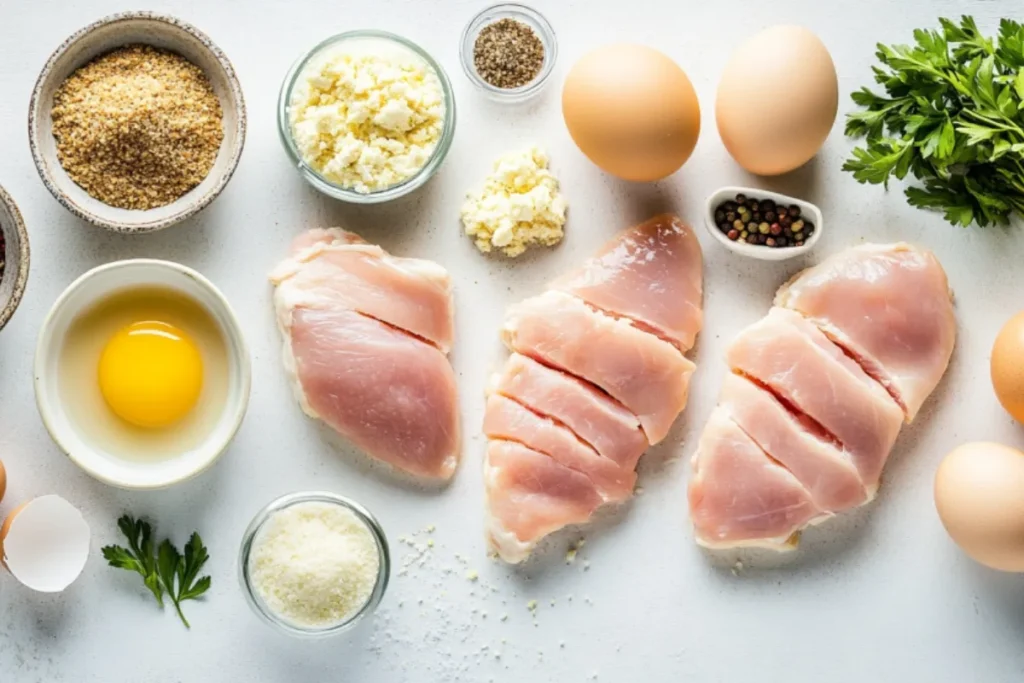
Preparing chicken cutlets is simple and doesn’t require a lot of ingredients. Here’s a list of the basic components you’ll need:
- Boneless, skinless chicken breasts or chicken thighs: These are the main protein for the cutlets. Boneless, skinless breasts are the most common choice because they’re easy to work with, but thighs can also be used for extra juiciness.
- Flour: The flour acts as the base layer that helps the egg adhere to the chicken and also contributes to the crispy texture of the cutlet.
- Eggs: Beaten eggs are essential for binding the breadcrumbs to the chicken. The egg creates a golden, crispy coating once fried.
- Breadcrumbs: Most chicken cutlet recipes call for plain breadcrumbs or panko breadcrumbs. Panko gives a lighter, crispier texture compared to traditional breadcrumbs.
- Seasonings: Common seasonings include salt, pepper, garlic powder, onion powder, and paprika. You can adjust the seasoning based on your flavor preferences—adding some Italian herbs for a Mediterranean twist or cayenne for a little heat.
- Oil: Vegetable oil or canola oil is commonly used for frying. These oils have a high smoke point, which makes them perfect for achieving that golden, crispy exterior.
Optional ingredients include Parmesan cheese in the breadcrumb mixture, fresh parsley for garnish, or lemon zest for a refreshing citrusy finish. The beauty of chicken cutlets is that they are easy to adapt to whatever flavors you’re craving.
If you’re looking for a quick chicken recipe to pair with your chicken cutlets, try BBQ Chicken Stuffed Sweet Potatoes. The combination of BBQ chicken and sweet potatoes is an excellent side dish to complement your crispy chicken cutlets.
The Role of Seasoning in Chicken Cutlets
Seasoning is crucial to making your chicken cutlets stand out. The chicken itself doesn’t have much flavor on its own, so the seasoning is what truly brings the dish to life. The combination of salt, pepper, and garlic powder is classic, but you can experiment with other herbs and spices to create a signature flavor profile.
For example, paprika or cayenne pepper adds a smoky, spicy element that pairs perfectly with the crispy chicken. Adding fresh herbs like oregano, thyme, or rosemary can introduce a fresh, earthy flavor to the dish. Don’t forget to season your breadcrumb coating too! Adding a little Parmesan cheese or Italian seasoning can really elevate the taste of the crust.
Step-by-Step Guide to Preparing Chicken Cutlets
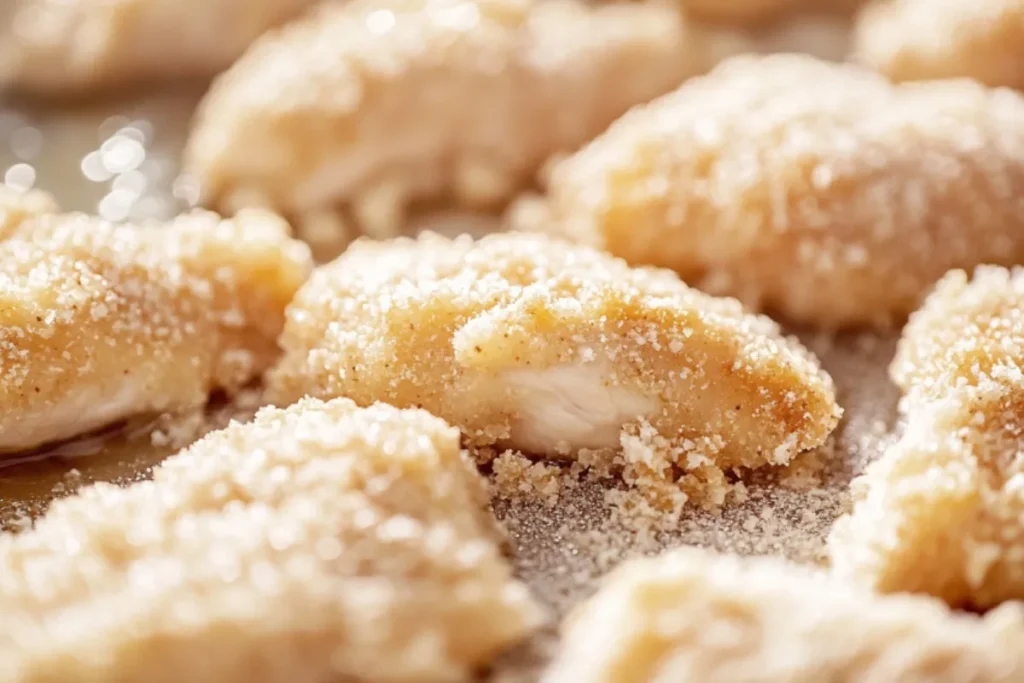
Preparing chicken cutlets is relatively simple, but achieving the perfect crispy exterior and tender interior requires a few key steps. Here’s a step-by-step guide:
- Prep the Chicken: Start by placing your chicken breasts on a cutting board. Using a sharp knife, slice the chicken in half horizontally to create thinner pieces, or use a meat mallet to pound the chicken to an even thickness. Aim for about 1/2-inch thickness for quick, even cooking.
- Season the Chicken: Season both sides of the chicken with salt, pepper, and any other seasonings you prefer. This step ensures the chicken is flavorful from the inside out.
- Set Up the Dipping Stations: You’ll need three shallow bowls for the breading process:
- Bowl 1: Place flour in this bowl, seasoned with a pinch of salt and pepper.
- Bowl 2: In the second bowl, beat the eggs. You can add a little water or milk to thin it out if needed.
- Bowl 3: For the final coating, use breadcrumbs. Add your seasonings or Parmesan cheese here for extra flavor.
- Bread the Chicken: Dip each piece of chicken in the flour, coating it evenly and shaking off any excess. Next, dip it into the egg mixture, ensuring it’s fully coated. Finally, dredge the chicken in the breadcrumb mixture, pressing gently to make sure the breadcrumbs stick. Repeat until all chicken pieces are coated.
- Fry the Chicken: Heat a generous amount of oil in a skillet over medium-high heat. Once the oil is hot (about 350°F), carefully place the breaded chicken into the skillet. Fry the chicken for about 3-4 minutes per side, or until golden brown and crispy. If the oil isn’t hot enough, the cutlets won’t get crispy—so make sure to keep the oil at a steady temperature.
- Drain and Serve: Once the chicken cutlets are done, remove them from the skillet and place them on a paper towel-lined plate to drain any excess oil. Serve hot with your favorite sides and sauces.
Do You Dip Cutlets in Egg or Flour First?
The Process of Dipping Chicken Cutlets
When breading chicken cutlets, it’s important to follow the correct sequence to ensure the breading sticks properly. The traditional order is:
- Flour: The chicken is first dipped in flour, which helps the egg adhere to the meat. This step forms a dry layer that makes it easier for the egg to bind the breadcrumbs.
- Egg: After the flour, dip the chicken into the beaten eggs. The egg acts as a binder and gives the breadcrumbs something to stick to.
- Breadcrumbs: Finally, coat the chicken in the breadcrumbs. This creates the crispy, golden exterior that makes chicken cutlets so irresistible.
The Role of Egg in Coating Chicken Cutlets
Egg plays an essential role in the breading process. It’s the glue that holds the breadcrumbs onto the chicken. Without the egg, the breadcrumbs would slide off during frying, and you’d lose that crispy coating.
The egg also helps achieve the beautiful golden color of the cutlet. If you want an extra crispy coating, you can dip the chicken back in the egg and then in the breadcrumbs again for a double coating. This adds an extra layer of crunch and makes the cutlet even more indulgent.
Why Flour is Essential for Chicken Cutlets
Flour is the first step in the breading process, and it serves several important functions. Not only does it help the egg stick, but it also contributes to the overall texture of the coating. The flour provides a dry layer that absorbs any moisture from the chicken, helping to create a crispy, crunchy exterior once fried. Without flour, the breading may not stick as well, and the cutlets might turn out soggy.
Cooking Chicken Cutlets
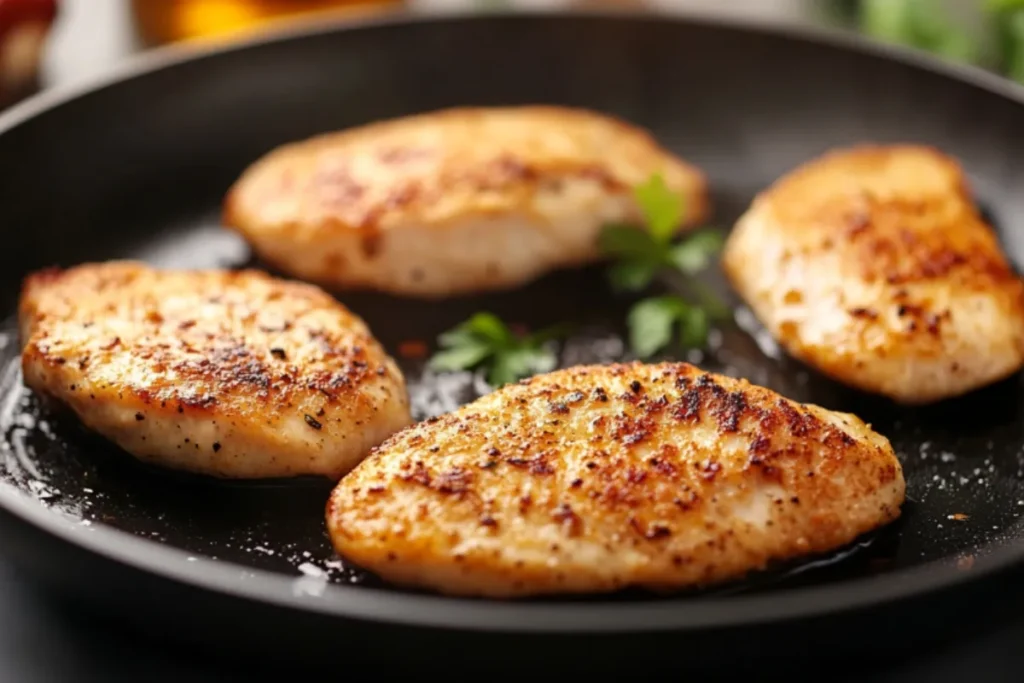
How Long Does it Take to Fry Chicken Cutlets?
The cooking time for chicken cutlets can vary depending on a few factors, including the thickness of the chicken and the temperature of the oil. On average, it takes about 3-4 minutes per side to fry chicken cutlets to perfection. This will give you a golden-brown, crispy exterior with a juicy, tender interior.
However, cooking time can change based on the heat of your oil and the size of the chicken pieces. It’s always a good idea to check the internal temperature to ensure the chicken is fully cooked. The ideal temperature for fully cooked chicken is 165°F (74°C). Using a meat thermometer is a foolproof way to make sure your chicken cutlets are safe to eat and cooked to perfection. For more information about safe chicken handling and cooking, check out Healthline’s guide on chicken safety.
However, cooking time can change based on the heat of your oil and the size of the chicken pieces. It’s always a good idea to check the internal temperature to ensure the chicken is fully cooked. The ideal temperature for fully cooked chicken is 165°F (74°C). Using a meat thermometer is a foolproof way to make sure your chicken cutlets are safe to eat and cooked to perfection.
Factors that Affect Cooking Time for Chicken Cutlets
Several factors can influence how long it takes to cook chicken cutlets, including:
- Chicken Thickness: Thicker chicken pieces will take longer to cook. If you find your chicken cutlets are too thick, consider slicing them thinner or using a meat mallet to pound them to an even thickness.
- Oil Temperature: If the oil is too hot, the outside of the chicken can burn before the inside cooks through. If the oil is too cold, the breadcrumbs will absorb too much oil, resulting in greasy cutlets. Ideally, the oil should be between 350°F and 375°F for the perfect crispy finish.
- Batch Size: If you’re frying multiple cutlets at once, avoid overcrowding the pan. Overcrowding reduces the oil temperature and causes uneven cooking. It’s better to fry in batches to get the best results.
Tips for Ensuring Chicken Cutlets are Cooked Perfectly
To achieve the perfect chicken cutlet every time, keep these tips in mind:
- Use a thermometer: As mentioned earlier, the best way to know if your chicken is cooked through is by using a meat thermometer. This will ensure that the internal temperature reaches 165°F (74°C) without overcooking.
- Rest the chicken: After frying, let the chicken cutlets rest on a paper towel-lined plate for a few minutes. This allows any excess oil to drain off and helps the crust stay crispy.
- Don’t skip the oil: For perfectly crispy cutlets, use enough oil to fry the chicken halfway up the sides. If you don’t use enough oil, the cutlets might stick to the pan, and the breading won’t get crispy.
Do You Use Flour for Chicken Cutlets?
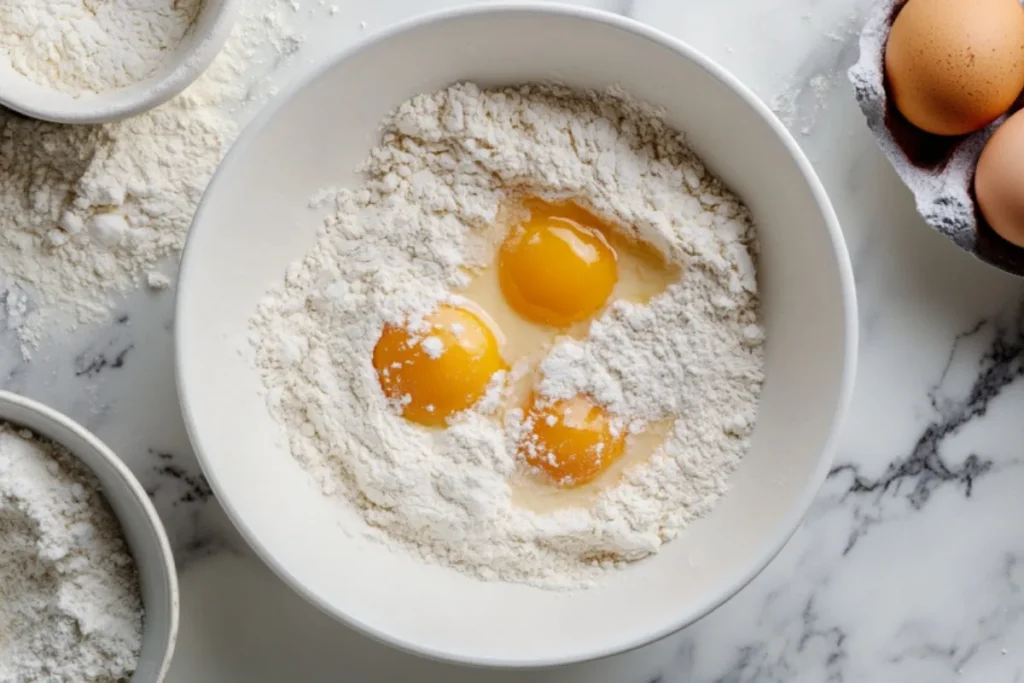
The Importance of Flour in the Coating Process
Flour is a crucial component in preparing chicken cutlets, and here’s why:
- Helps the Egg Stick: The first layer of flour helps the egg stick to the chicken, which is essential for the breadcrumbs to adhere properly.
- Crispy Texture: The flour, combined with the breadcrumbs, helps form a crispy outer layer. When fried, the flour creates a delicate, crunchy crust that is satisfying to bite into.
- Absorbs Moisture: Flour helps absorb moisture from the chicken, which prevents the breading from becoming soggy. This is particularly important when frying, as it keeps the cutlet crispy on the outside and juicy on the inside.
Alternative Coating Methods for Chicken Cutlets
While flour is essential for traditional chicken cutlets, there are other creative ways to coat your chicken for a unique twist:
- Almond Flour or Coconut Flour: For a gluten-free option, almond flour or coconut flour can replace regular flour in the breading process. These alternatives create a nutty flavor and a crispy texture that complements the chicken beautifully.
- Crushed Cornflakes: For an even crunchier, lighter coating, try using crushed cornflakes instead of breadcrumbs. Cornflakes add a satisfying crunch and a slightly different flavor profile.
- Panko Breadcrumbs: While traditional breadcrumbs work well, panko breadcrumbs create an even crunchier, airier crust. If you prefer a lighter, crispier texture, panko is an excellent choice.
- Rice Flour: For a more delicate texture, rice flour is a great alternative. It’s especially common in Asian cooking and creates a light, crispy coating.
These alternatives can give your chicken cutlets a unique twist while still achieving that deliciously crispy texture.
FAQs
What is a cutlet of chicken?
A chicken cutlet is a thin, boneless piece of chicken, usually from the breast or thigh, that is pounded flat, seasoned, breaded, and then fried. It’s known for its crispy exterior and tender, juicy interior. Chicken cutlets can be used in a variety of dishes, such as chicken Parmesan, sandwiches, or served as a main course with sides.
Do you dip cutlets in egg or flour first?
When breading chicken cutlets, the correct order is:
- Flour: First, coat the chicken in flour. This step helps the egg adhere to the chicken.
- Egg: Next, dip the chicken into a beaten egg mixture.
- Breadcrumbs: Finally, coat the chicken in breadcrumbs. The flour ensures the egg sticks, and the egg helps the breadcrumbs form a crispy crust.
How long does it take to fry chicken cutlets?
The cooking time for chicken cutlets typically takes 3-4 minutes per side when frying on medium-high heat. The exact time can vary depending on the thickness of the chicken and the temperature of the oil. To ensure the chicken is fully cooked, check the internal temperature—it should reach 165°F (74°C).
How do I know when chicken cutlets are done frying?
Chicken cutlets are done frying when they have a golden-brown crust and the internal temperature reaches 165°F (74°C). If you don’t have a meat thermometer, you can also cut into the thickest part of the chicken to ensure it’s no longer pink and the juices run clear.
Can I bake chicken cutlets instead of frying?
Yes, you can bake chicken cutlets for a healthier alternative to frying. Preheat your oven to 400°F (200°C), place the breaded chicken cutlets on a baking sheet, and bake for about 20-25 minutes, flipping halfway through. You can also broil them for the last 2-3 minutes to get a crispy, golden finish.
What oil is best for frying chicken cutlets?
The best oils for frying chicken cutlets are vegetable oil, canola oil, or peanut oil. These oils have a high smoke point, which is important for frying at the right temperature without burning the oil. For a healthier option, you can also use olive oil, though it has a lower smoke point and may not crisp up as well as the other oils.
Can I make chicken cutlets gluten-free?
Yes, chicken cutlets can easily be made gluten-free! Use gluten-free flour and gluten-free breadcrumbs (or crushed rice cereal) as substitutes for the traditional flour and breadcrumbs. This way, you can still achieve that crispy exterior while keeping the dish suitable for those with gluten sensitivities.

